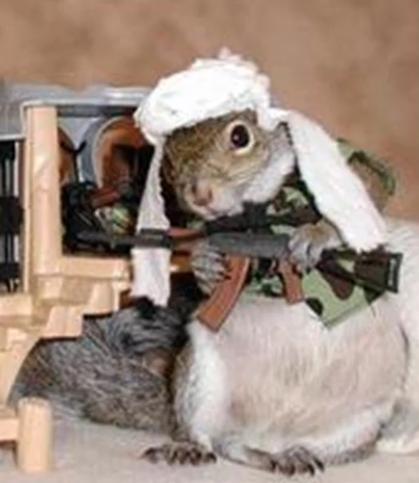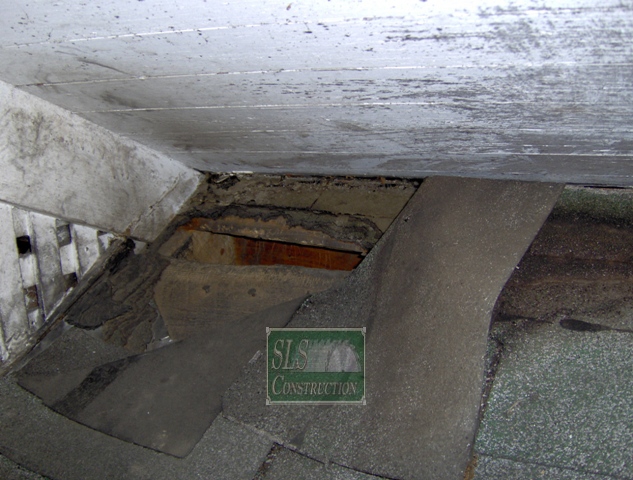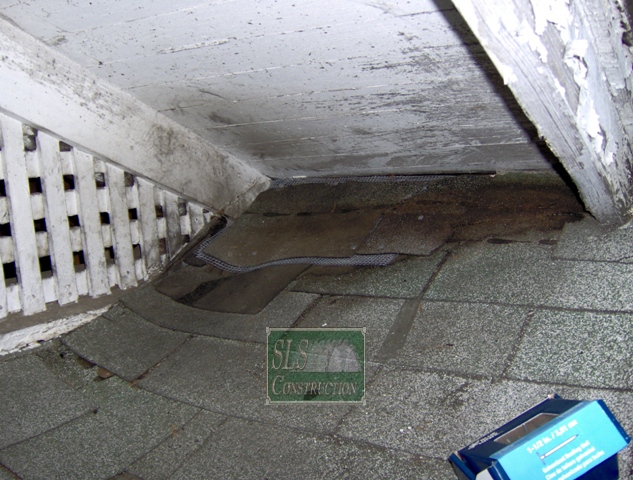 In our latest article, we were reviewing the EPA’s “Healthy Indoor Environment Protocols for Home Energy Upgrades” and a section came up on pests. Seeing we are now nearing the wintertime, many animals are now searching for areas to hibernate, nest, stash their nuts, and even have their youngsters. Unfortunately, for us – rodents just do not seem to understand that houses are for humans & their pets only and they don’t mind create their own doorways.
In our latest article, we were reviewing the EPA’s “Healthy Indoor Environment Protocols for Home Energy Upgrades” and a section came up on pests. Seeing we are now nearing the wintertime, many animals are now searching for areas to hibernate, nest, stash their nuts, and even have their youngsters. Unfortunately, for us – rodents just do not seem to understand that houses are for humans & their pets only and they don’t mind create their own doorways.
Constant Vigilance:
 If you have been following our Monthly Maintenance Checklists, Air Sealing Articles, or have had, your house professionally tested & air sealed – you should be in great shape. With that said, these tasks are not ones you do once & you never have to worry about again – you need to inspect your house on an ongoing basis (as listed in above Monthly Maintenance Series) and fix any problems, before they grow out of proportion.
If you have been following our Monthly Maintenance Checklists, Air Sealing Articles, or have had, your house professionally tested & air sealed – you should be in great shape. With that said, these tasks are not ones you do once & you never have to worry about again – you need to inspect your house on an ongoing basis (as listed in above Monthly Maintenance Series) and fix any problems, before they grow out of proportion.
 While the hole shown above is obvious now, it might not have been when the squirrel or raccoon first got started. However, in this picture, you can easily see the mess that they made from all the shingles that they ripped off & moved to create the hole which was not just done overnight. This mess is all from the roof area, inside the attic still needs to be cleaned out and inspected. While many believe that squirrels will only access your attic from above, that is not always the case: as my friend John wrote about in this article on the Hawkin’s House or this repost on Building Moxie. Speaking of rodent problems; I would be remiss if I didn’t add in Mike Hines article on A Better Mousetrap – well worth a good laugh as I set out a few more traps in my place (yah, yah – cobblers shoes).
While the hole shown above is obvious now, it might not have been when the squirrel or raccoon first got started. However, in this picture, you can easily see the mess that they made from all the shingles that they ripped off & moved to create the hole which was not just done overnight. This mess is all from the roof area, inside the attic still needs to be cleaned out and inspected. While many believe that squirrels will only access your attic from above, that is not always the case: as my friend John wrote about in this article on the Hawkin’s House or this repost on Building Moxie. Speaking of rodent problems; I would be remiss if I didn’t add in Mike Hines article on A Better Mousetrap – well worth a good laugh as I set out a few more traps in my place (yah, yah – cobblers shoes).
In this case, due to its location & knowing that the roof needs to be replaced within another year, we simply did a temporary patch. We used a doubled up layer of ¼” hardware cloth & topped it off with a shingle that had been ripped of by a squirrel or raccoon. While we would have loved to have trapped the animal first, that was not an option in this case & we generally prefer that this is left to a company that specializes in that.
Five common problem areas:
- Foundation Area:
- Don’t pile up mulch or leaves right next to the foundation as you are just creating a nice cozy area, where the mice & other rodents can work and play without you noticing
- Check for any holes or cracks which might allow for water & rodents to enter
- Trees & Shrubs:
- these should not be planted close to the house as they can not only damage the house but leave a nice pathway for the rodents to access your house, but an escape vector if spotted
- Trim tree limbs back (squirrel’s can jump up to 12 feet)
- Roof Area:
- proper flashing details protects you not only from water entering the building, but prevents animals from being able to get in
- As shown above, look for and repair any areas where it appears animals are trying to get in – generally they are great at pointing out where areas of dry rot or insects are located
- Chimneys and roof vents – make sure the caps are all in good shape, & have ¼” steel netting to help prevent rodents from entering the building
- Siding & Trim:
- Check for cracks, holes, etc… where not only water but rodents can enter & seal appropriately
- Bricks – check for missing mortar or gaps where rodents can enter — DO NOT seal up the weep holes in the bottom course of bricks or above windows – if you sense that might be an entrance, only seal up with steel wool or something that will allow water to drain out from behind the structure
- Inside the house:
- Review this article for common entrance paths (Air Sealing Inside Your House)
- Eliminate the temptations: Daily cleaning, clean up spills immediately, store food in air tight containers, do not leave food out for your pets overnight
Additional Info & Websites:
Tool Box Talk: OSHA’s Rodents, Snakes and Insects Quick Card
CDC Rodents: Advice on Sealing, Trapping, Cleaning & Reasons to do so
This Old House: How animals are getting into your house – good article on size of the holes, where they like to enter, signs, best spot for traps, preventative methods, etc…


Great Sunday Safety posting, Sean (as always). This is the best article I’ve seen yet on this topic, in particular because you’ve enumerated the potential entry points and how to go about repairing them or taking steps to prevent critter infiltration.
Another good point is your comment about relying on critter-removal professionals. I think this is important from a health and safety standpoint. In my own misadventure, I managed to safely remove the squirrels on my own, but I also wasn’t thinking that much about health and safety at the time, just getting them out. Had I had bats or a raccoon, on the other hand, I believe I would’ve been forced to give more consideration to the situation, and would’ve definitely hired some one else to do it!
Well seeing you were the inspiration for this one John, I am glad you liked it & here’s hoping both of our houses stay critter free. Oh and as a quick side note – I found another squirrel pic for you. (Relax, as long as you have kyrptonite around though he won’t bother you) Have a good one bud
Great Sunday Safety posting, Sean (as always). This is the best article I’ve seen yet on this topic, in particular because you’ve enumerated the potential entry points and how to go about repairing them or taking steps to prevent critter infiltration.
Another good point is your comment about relying on critter-removal professionals. I think this is important from a health and safety standpoint. In my own misadventure, I managed to safely remove the squirrels on my own, but I also wasn’t thinking that much about health and safety at the time, just getting them out. Had I had bats or a raccoon, on the other hand, I believe I would’ve been forced to give more consideration to the situation, and would’ve definitely hired some one else to do it!
Well seeing you were the inspiration for this one John, I am glad you liked it & here’s hoping both of our houses stay critter free. Oh and as a quick side note – I found another squirrel pic for you. (Relax, as long as you have kyrptonite around though he won’t bother you) Have a good one bud